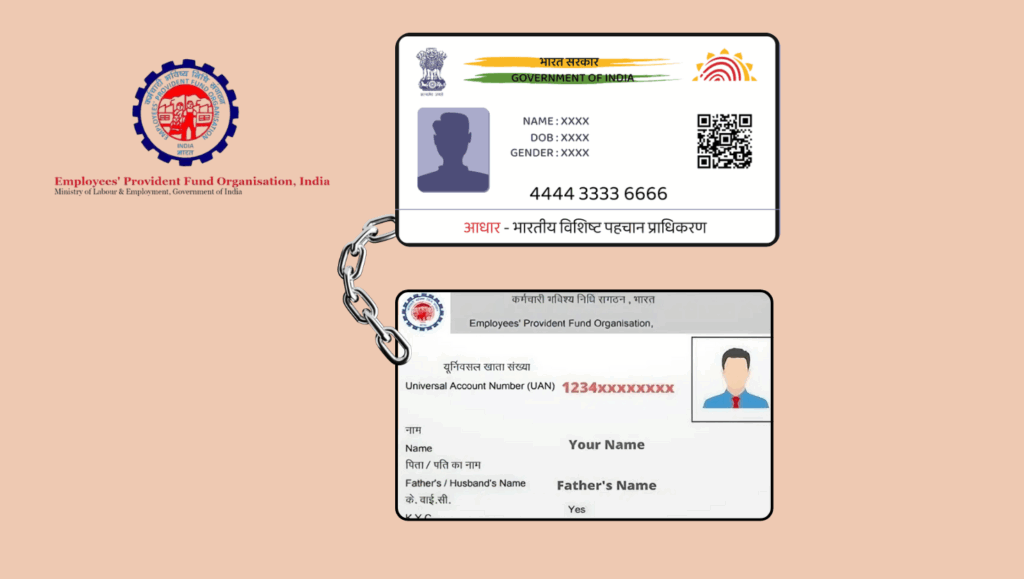
How to close a joint bank account in India after one holder’s death. This step-by-step guide covers legal steps, required documents, and RBI rules to ensure a smooth process. Learn key tips to avoid pitfalls and manage succession seamlessly. Read now for expert insights!
Losing a loved one is an emotionally challenging time, and managing their financial affairs, such as closing a joint bank account, can add to the complexity. In India, the process of closing a joint bank account after one account holder’s death depends on various factors, including the account’s mode of operation, survivorship clauses, and legal requirements. This blog post provides a detailed, step-by-step guide to help you navigate this process seamlessly, incorporating the latest regulations and practical insights to ensure a smooth experience. Whether you’re dealing with a savings account, fixed deposit, or current account, this guide will answer your questions and empower you to manage the closure effectively.
With the right documentation and understanding of Indian banking rules, closing a joint bank account can be easy.
Understanding Joint Bank Accounts in India
A joint bank account is a financial account shared by two or more individuals, typically spouses, family members, or business partners. In India, joint accounts are popular for their convenience, allowing multiple holders to manage funds for shared expenses, estate planning, or business operations. The Reserve Bank of India (RBI) and banks like the State Bank of India (SBI), HDFC Bank, and ICICI Bank offer various modes of operation for joint accounts, each with specific rules for succession and closure, especially when one account holder passes away.
Types of Joint Bank Account Modes in India
The mode of operation determines how the account is managed during the account holders’ lifetimes and after one’s death. The most common types include:
- Either or Survivor: This is the most popular mode in India. Any account holder can operate the account independently, and upon the death of one holder, the surviving holder gains full control of the account without requiring legal heirs’ involvement.
- Joint or Survivor: All account holders must approve transactions. If one holder dies, the surviving holder can continue operating the account, but some banks may require additional documentation.
- Former or Survivor: Only the primary account holder can operate the account during their lifetime. Upon their death, the secondary holder assumes control.
- Latter or Survivor: The secondary holder operates the account, and upon their death, the primary holder takes over.
- Joint: All transactions require approval from all account holders. If one dies, the account may become inoperable until legal heirs or survivors settle the claim.
Understanding the mode of operation is crucial, as it directly impacts the process of closing or managing the account after one holder’s death. Most joint accounts in India are set up with a survivorship clause, which simplifies the transfer of ownership to the surviving holder.
What Happens to a Joint Bank Account When One Holder Dies?
When one joint account holder passes away, the fate of the account depends on the mode of operation, the presence of a survivorship clause, and whether a nominee or will exists. Here’s a breakdown of the scenarios:
- With Survivorship Clause (e.g., Either or Survivor): The surviving account holder automatically assumes full ownership of the account. The bank typically requires a death certificate to update the account records and remove the deceased’s name. The survivor can then choose to continue operating the account or close it.
- Without Survivorship Clause: If the account lacks a survivorship clause, the balance is payable to the surviving holder(s) and the legal heirs of the deceased. This may involve legal representation, such as a succession certificate, especially if disputes arise among heirs.
- Nominee or Will: If a nominee is designated, they may claim the funds, but this depends on the account’s terms and whether a will overrides the nomination. A will may direct the funds to specific beneficiaries, requiring probate to execute.
- Minor as Survivor: If the surviving holder is a minor, the bank may restrict operations until a legal guardian is appointed or the minor reaches adulthood.
The process is generally straightforward for accounts with a survivorship clause, but complexities arise without one, necessitating legal documentation.
Step-by-Step Process to Close a Joint Bank Account After Death
Closing a joint bank account after the death of one holder involves specific steps, which vary slightly depending on the bank and account type. Below is a comprehensive guide to help you navigate the process:
Step 1: Notify the Bank of the Death
The first step is to inform the bank of the account holder’s passing as soon as possible. This prevents unauthorized transactions and ensures the bank freezes or updates the account appropriately. Visit the bank branch where the account is held and provide:
- Certified Copy of the Death Certificate: This is a mandatory document to verify the account holder’s death. Obtain it from the municipal corporation or local authority where the death was registered.
- Account Details: Provide the joint account number, names of the account holders, and the mode of operation.
Some banks, like SBI, may allow initial notification through online channels, but an in-person visit is typically required for further processing.
Step 2: Verify the Mode of Operation
Confirm the account’s mode of operation by checking the account opening form or contacting the bank. For accounts with an "Either or Survivor" clause, the surviving holder can proceed with minimal documentation. For accounts without survivorship, additional legal steps may be needed.
Step 3: Submit Required Documentation
The bank will provide a claim form specific to deceased account holders. The surviving account holder or legal heirs must submit the following documents:
- Death Certificate: A certified copy is essential.
- KYC Documents: Valid ID proof (Aadhaar, PAN, passport, etc.) of the surviving holder or claimant.
- Claim Form: Each bank, such as SBI, HDFC, or ICICI, has its own form for settling deceased account claims.
- Letter of Indemnity: In some cases, the bank may require an indemnity bond from the claimant to protect against future disputes.
- Succession Certificate or Will: If there’s no survivorship clause or nominee, a succession certificate from a court or a probated will may be required to establish the legal heirs’ rights.
- Letter of Disclaimer: If multiple legal heirs exist, those not claiming the funds may need to sign a disclaimer in favor of the claimant.
For accounts with a survivorship clause, the process is simpler, often requiring only the death certificate and a claim form. For example, SBI’s guidelines state that survivors of an "Either or Survivor" account can submit a simple application with the death certificate to transfer the balance to a new account in their name.
Step 4: Transfer or Close the Account
Once the bank verifies the documents, the surviving holder has two options:
- Continue Operating the Account: The bank removes the deceased holder’s name, and the account continues in the survivor’s name. This is common for "Either or Survivor" accounts.
- Close the Account: The survivor can request to close the account and transfer the balance to another account. If closing, the bank may issue a demand draft, cheque, or electronic transfer to the survivor’s account.
For fixed deposits, the process varies:
- With Survivorship Clause: The survivor can request premature withdrawal without penalty, with interest paid for the period the deposit was active.
- Without Survivorship Clause: The balance is paid to the survivor and legal heirs jointly, or the deposit can be split into separate receipts for legal heirs without premature withdrawal penalties.
Step 5: Settle Outstanding Debts or Taxes
Before closing the account, ensure any outstanding debts or taxes linked to the deceased’s estate are settled. Joint accounts with rights of survivorship typically bypass probate, meaning the funds are not part of the deceased’s estate and are not used to settle their debts unless the surviving holder co-signed the debt. However, consult a tax advisor to understand potential tax implications, such as inheritance tax, which may apply in certain states.
Step 6: Update Account Records
If the survivor chooses to continue the account, the bank updates its records to reflect the sole ownership. This may involve signing new account forms or updating KYC details. Some banks, contrary to RBI guidelines, may insist on closing the joint account and opening a new one in the survivor’s name, as seen in cases with HDFC Bank. If this occurs, escalate the issue to the bank’s grievance cell or the Banking Ombudsman.
Step 7: Consult a Legal Expert (If Needed)
For complex cases—such as disputes among legal heirs, absence of a survivorship clause, or lack of a nominee—consulting a legal expert is advisable. A lawyer can help obtain a succession certificate, probate a will, or resolve disputes among claimants. Legal consultation ensures compliance with Indian succession laws, such as the Hindu Succession Act, 1956, or the Indian Succession Act, 1925, depending on the deceased’s religion.
Key Documents Required to Close a Joint Bank Account
To streamline the process, prepare the following documents:
- Certified copy of the death certificate
- Joint account details (passbook, account number, or statement)
- KYC documents of the surviving holder or claimant
- Bank’s claim form for deceased accounts
- Succession certificate or probated will (if no survivorship clause)
- Letter of indemnity or disclaimer (if required by the bank)
- Valid ID proof of legal heirs or nominees
Always verify the specific requirements with the bank, as they may vary. For instance, SBI and Bank of India may have different claim forms or additional documentation needs.
Challenges and Common Issues
Closing a joint bank account after a death can encounter hurdles, including:
- Bank Non-Compliance with RBI Rules: Some banks may insist on closing the joint account and opening a new one, despite RBI guidelines allowing the survivor to continue the account. Escalate such issues to the bank’s grievance redressal mechanism or the RBI’s Banking Ombudsman.
- Disputes Among Legal Heirs: Without a survivorship clause or nominee, legal heirs may contest the funds, requiring a succession certificate or court intervention.
- Delayed Notification: If the bank isn’t informed promptly, the account may be deemed dormant, complicating the claim process.
- Tax Implications: While India does not have a federal inheritance tax, state-specific taxes or estate duties may apply. Consult a tax advisor to clarify obligations.
Tips for Smooth Account Closure
To ensure a hassle-free process:
- Act Promptly: Notify the bank as soon as possible to avoid complications.
- Verify Survivorship Clause: Confirm the account’s mode of operation before initiating closure.
- Keep Records: Maintain copies of all submitted documents and correspondence with the bank.
- Seek Legal Advice: For complex cases, consult a lawyer to navigate succession laws or disputes.
- Check for Nominees: If a nominee exists, their claim may take precedence over legal heirs, depending on the account terms.
RBI Guidelines and Bank Policies
The RBI has clear guidelines on managing joint accounts after a holder’s death, outlined in its master circulars. Banks must allow survivors of accounts with a survivorship clause to access funds with minimal documentation, typically a death certificate and claim form. However, some banks may deviate from these rules, as seen in cases where survivors were asked to open new accounts unnecessarily. Always refer to the RBI’s guidelines or consult the Banking Ombudsman if you face issues.
Alternatives to Joint Accounts for Estate Planning
While joint accounts are convenient, they may not always be the best option for estate planning due to risks like creditor claims or disputes among heirs. Alternatives include:
- Payable-on-Death (POD) Accounts: Designate a beneficiary who inherits the funds directly upon the account holder’s death, bypassing probate.
- Living Trusts: Transfer account ownership to a trust, managed by a trustee for the benefit of named beneficiaries.
- Nomination: Register a nominee with the bank to simplify fund transfer after death.
Discuss these options with a financial planner to choose the best approach for your needs.
Final Thought
Closing a joint bank account in India after one account holder’s death is a manageable process with the right knowledge and documentation. For accounts with a survivorship clause like "Either or Survivor," the process is straightforward, requiring only a death certificate and a claim form. However, accounts without survivorship or with multiple legal heirs may involve additional steps, such as obtaining a succession certificate. By understanding the account’s mode of operation, preparing the necessary documents, and acting promptly, you can ensure a smooth transition or closure.
This guide has covered the latest regulations, practical steps, and potential challenges to help you navigate this process with confidence. If you encounter difficulties, consult a legal or financial expert to protect your interests and comply with Indian banking laws. For more information on specific bank policies, visit the websites of major banks like SBI, HDFC, or ICICI, or refer to the RBI’s official guidelines.
Disclaimer: This article is for informational purposes only. Consult a legal or financial advisor for personalized advice on closing a joint bank account after a death.
















































